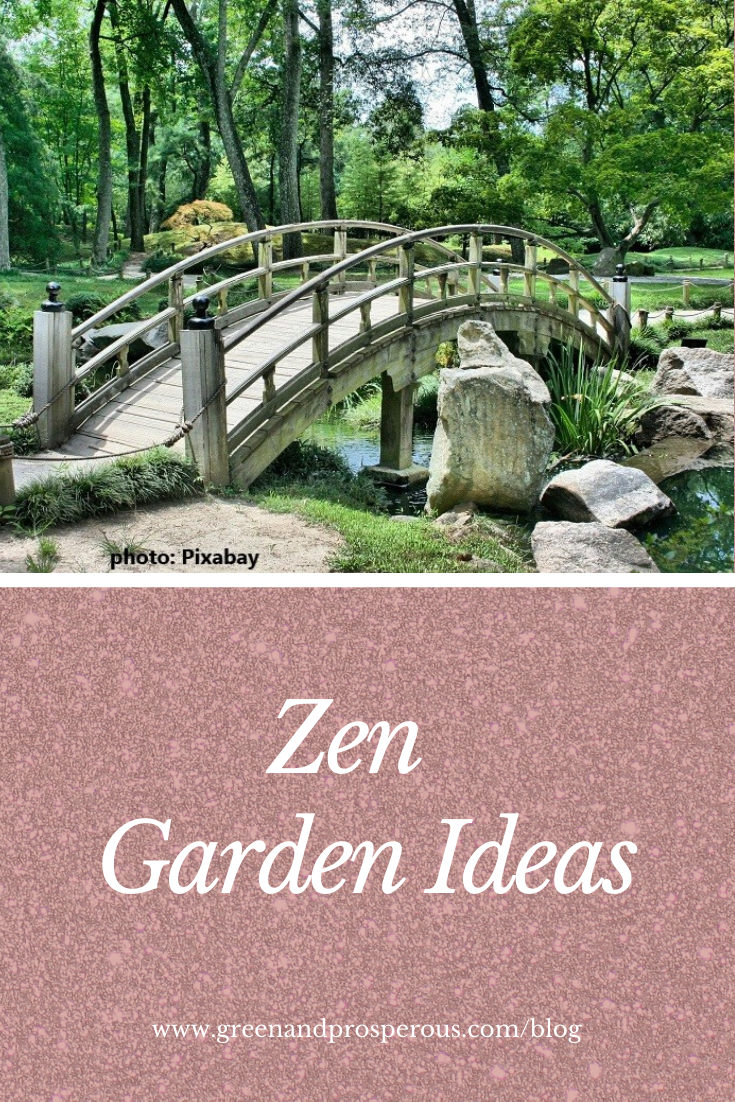Zen Garden Ideas
/Gardens are a beautiful way of staying in touch with nature. Even the smallest amount of ground in your front or back yard can be turned into a garden, and with little effort, you can have your own veggies or a colorful setting where you can go to relax. Gardening became so popular recently that Americans spent $3.5 billion on gardening food in 2013; currently half of US homeowners work on their gardens. After all, there’s nothing better than witnessing plants that thrive around you.
While growing food is one of the main reasons people opt in for gardening, it is often very demanding, which is why some decide to grow floral gardens instead. However, if you’re up for creating a meditative place in your yard and love to tackle a landscape challenge, you might want to explore a Japanese Zen garden.
The History and Meaning of Zen Gardens
Japanese rock garden, karesansui, originated in medieval Japan. In Early Japan, before 794 AD, Zen gardens could be found in the middle of forests. People created these sacred spots and marked them only with pebbles. During the Heian Period (794-1185), aristocrats started working on Shinden Gardens, where they partied, went fishing, and relaxed.
The concept of Zen Buddhism came into the picture during the Kamakura and Muromachi Period (1192-1573) when the upper class shifted from recreation to a disciplined mindset. Naturally, this change was reflected in their gardens, which became minimalistic.
Tea gardens were a thing during the Azuchi-Momoyama period (1573-1603). These gardens were simple, containing a stone path that led to the tea house, where the tea ceremony was practiced.
The Edo Period (1603-1867) brought back some of the extravagances, as the ruling class returned to broader areas, ponds, and artificial hills.
Modern gardens, from 1867 to present, were affected by modernization and the West. Many of the private gardens were opened to the public; today, traveling to Japan often entails visiting at least one of them.
Zen gardens symbolize purity, and they are often placed in the backyards of temples and shrines. A Zen garden is a landscape that is artificially created with the use of rocks, sand, and plants – moss, pruned trees, and bushes. The most important feature of the Zen garden is the sand, which is used to represent the movement of water. These gardens are used as a place for meditation.
Another critical aspect of the Zen garden is the use of stones. They are carefully chosen, shaped by nature only, to awake the special emotion in the observer. Rocks sometimes represent replicas of mountains, but they can also be observed as boats since they are on the sand (representing water) or living creatures such as turtles.
Creation of a Zen Garden
It might seem easy to make a Zen garden, but in reality, it takes a lot of thinking and detailed planning. The components of it should represent nature, and the whole composition should make sense when observed from a specific angle. The style is minimalistic yet without the use of symmetry.
Before starting to work on your rock garden, observe the place, and decide how the garden will flow. The smaller space takes less time and investment. If you want to include plants in your Zen garden, you should consider the sunny and shady areas. Some of the best plants for Zen gardens are moss, Chinese lanterns, ferns, Japanese forest grass, bamboo, azaleas, miniature pines, or pagoda dogwood. Here’s what you need to start creating your own meditation place:
White gravel in the right amount and nature shaped stones
Steel and wooden garden rake
Shovel
Hoe
Tape measure
String, string level, and stakes
Tamper
Landscape fabric
Edging stones
Back brace, work gloves
Plants
Patience
Time
Once you have prepared it all, it’s time to get to work. You will need to get your space ready by cleaning up everything that’s above the ground level, then remove the top layer with a metal rake. Make sure to level up the ground by raking all the uneven spots. After that, tamp the soil and set up stone edging, which will help you keep the gravel together.
Dig the holes for the stones and plants and place them according to your plan. Place landscape fabric over it and cut the holes to fit the rocks and plants. Pour the gravel and distribute it evenly, then rake the imitation of water ripples around the elements with a wooden rake.
Maintain and enjoy yourself in your Zen garden. When the ripples and lines in the sand become invisible, create them again. If you notice that your plants are not thriving, you should improve soil quality or water them.
What to Avoid When Creating a Zen Garden
Since they are supposed to mimic nature, avoid any symmetry. All wooden features and stones should remain natural, not painted, and the use of multiple bold-colored flowers should be avoided. Zen gardens are minimalistic, so there is no place for accessories, even if they are Japanese in design. Avoiding these additions will make your garden look more authentic.
Zen Garden on Your Desk
Did you know that you can have a Zen garden on your office desk? Today you can purchase or create a mini Zen garden. All you need are a wooden box, sand, mini wooden rake, and a few stones.
The process of creating it is the same – pour the sand in the wooden box, place the rocks inside, and rake the ripples around them. You can add an incense burner or a mini Buddha statue. If you prefer, you can use crystals instead of rocks. Having a mini Zen at the reach of your hand will help you deal with work-related stress.
Conclusion
Having a Zen garden can enhance your well-being and mental health. They are great for those moments when you want to take a break from your busy lifestyle, and they can become a part of your meditation routine. And in case you don’t meditate, don’t worry – the repetitive motion of raking is calming enough. The best thing about Zen gardens is that they can fit any place and size, even your office desk.
About the Author:
Ilija Acimovic is a researcher, writer, and advocate for sustainability. She began her writing experience in the field of economics and technology but is now purely focused on the eco-friendly tech niche. She believes that plants have a soul just like other living things and should be at the center of our eco-initiatives.
Like this? Please pin!









































